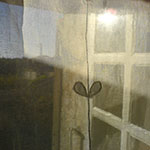Euroacademia Conferences
 Europe Inside-Out: Europe and Europeanness Exposed to Plural Observers (9th Edition) April 24 - 25, 2020
Europe Inside-Out: Europe and Europeanness Exposed to Plural Observers (9th Edition) April 24 - 25, 2020 Identities and Identifications: Politicized Uses of Collective Identities (9th Edition) June 12 - 13, 2020
Identities and Identifications: Politicized Uses of Collective Identities (9th Edition) June 12 - 13, 2020 8th Forum of Critical Studies: Asking Big Questions Again January 24 - 25, 2020
8th Forum of Critical Studies: Asking Big Questions Again January 24 - 25, 2020 Re-Inventing Eastern Europe (7th Edition) December 13 - 14, 2019
Re-Inventing Eastern Europe (7th Edition) December 13 - 14, 2019 The European Union and the Politicization of Europe (8th Edition) October 25 - 26, 2019
The European Union and the Politicization of Europe (8th Edition) October 25 - 26, 2019 Identities and Identifications: Politicized Uses of Collective Identities (8th Edition) June 28 - 29, 2019
Identities and Identifications: Politicized Uses of Collective Identities (8th Edition) June 28 - 29, 2019 The European Union and the Politicization of Europe (7th Edition) January 25 - 26, 2019
The European Union and the Politicization of Europe (7th Edition) January 25 - 26, 2019 7th Forum of Critical Studies: Asking Big Questions Again November 23 - 24, 2018
7th Forum of Critical Studies: Asking Big Questions Again November 23 - 24, 2018 Europe Inside-Out: Europe and Europeanness Exposed to Plural Observers (8th Edition) September 28 - 30, 2018
Europe Inside-Out: Europe and Europeanness Exposed to Plural Observers (8th Edition) September 28 - 30, 2018 Identities and Identifications: Politicized Uses of Collective Identities (7th Edition) June 14 - 15, 2018
Identities and Identifications: Politicized Uses of Collective Identities (7th Edition) June 14 - 15, 2018
Museum and Identities: The Example of African American Museums
-
-

-
Presentation speakers
- Gwennaëlle Cariou, Université Paris Diderot
Abstract:
Museums are spaces where the past can be brought out to the public. It is especially important for communities that have suffered from a lack of representation in museums, such as the African Americans. They are part of American history, as they have been present in North America since the beginning of the 17th century. Yet, due to slavery and segregation, they have not been considered as being part of the USA for centuries. Museums devoted to African Americans in the USA have a special place in the American landscape of museums. Indeed, the first African American museums were funded in the 1960s such as the DuSable African American Museum in Chicago (1961), the African American Museum in Boston (1964) and the Charles H. Wright of African American History in Detroit (1967). Since the 1990s and especially during the 2000s, many other black museums were created such as the African American Museum of Iowa in Cedar Rapids (2003) or the Reginald F. Lewis Museum of Maryland African American History & Culture in Baltimore (2005). Those museums are evoking different historical periods and themes devoted to the African American experience in the USA, either at a local or a national stage. Representing African American history and culture is a way to reflect on African American identity and its relationship to American identity. Museums can play a role in the creation of an identity of a state or a country (like in 19th century Europe), and for communities, to show their importance and the part they took in the American history and culture, and the way they are different from that. For African Americans, the situation is peculiar: African American being both part of American history and culture and being different from that. Is it possible to define an African American identity? If so, what type of objects or displays can be representative of this identity? How can museums contribute to the understanding of an African American in a mainstream white culture landscape in the USA?
-
Related Presentations

Russians in Europe and European Attitudes of Russians. Identity Challenge and Identity Change - The Dilemma of Self-Identification of Russian Speaking Migrants in Europe
- German Mendzheritskiy
- Ekaterina Bagreeva

















